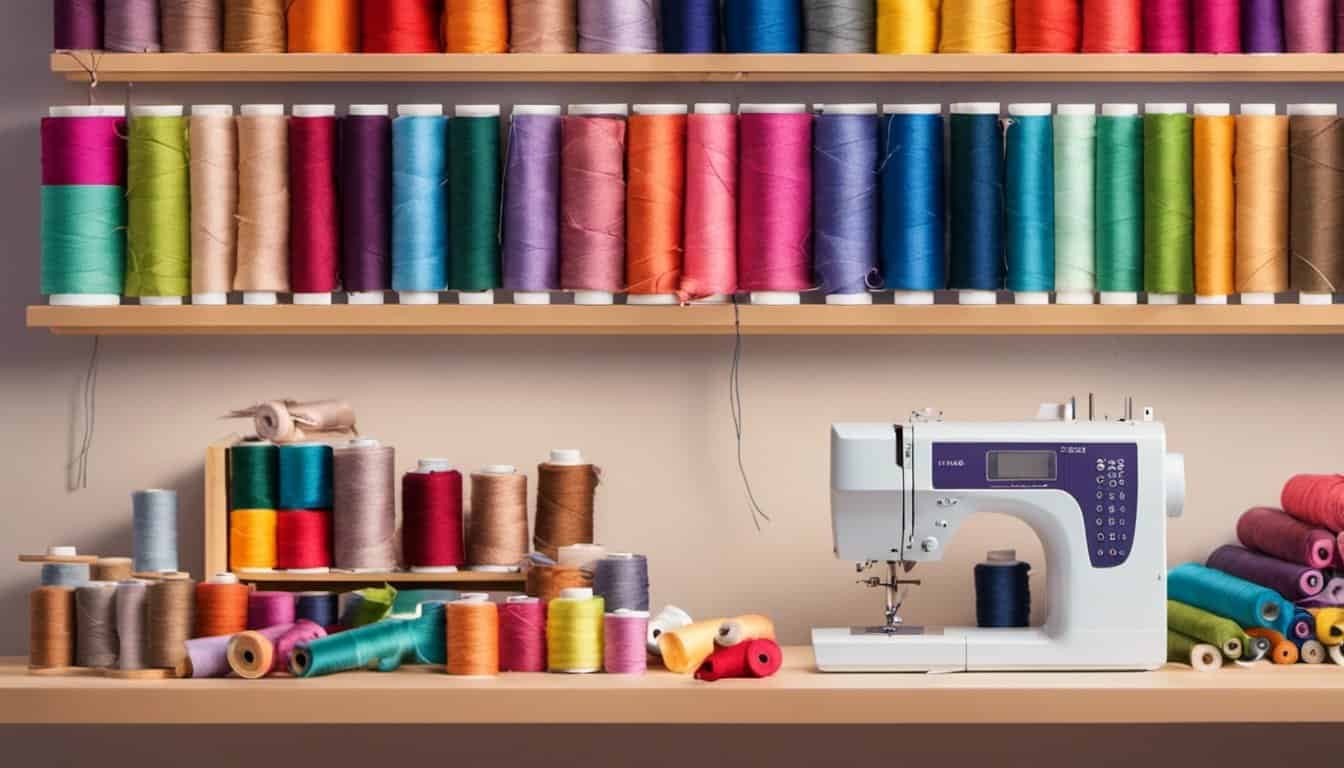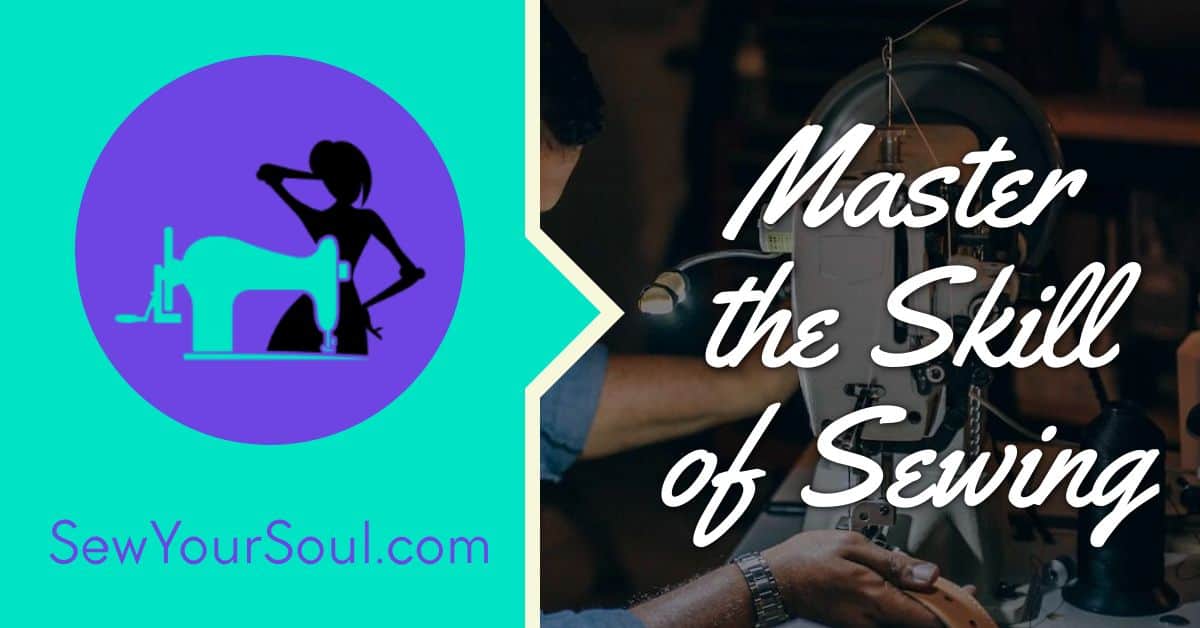Ever found yourself overwhelmed by the vast array of sewing threads available? You’re not alone! Whether you’re a seasoned seamstress or just starting your sewing journey, choosing the right thread can make or break your project.
Understanding the Basics of Sewing Thread
Choosing the right sewing thread is essential for your sewing projects to ensure durability and a polished finish.
Importance in Various Sewing Projects
Sewing thread selection affects the strength and appearance of the seam. The right thread can enhance fabric compatibility, leading to smoother sewing. For instance, cotton thread works well with natural fabrics like cotton and linen, while polyester thread suits synthetic fabrics. Using the correct thread minimizes breakage and tension issues, ensuring a smoother sewing process.
Different Fibers Used in Sewing Threads
Different fiber materials in sewing threads offer unique benefits suited to various fabric types and project requirements.
- Cotton: Ideal for natural fabrics. Cotton thread is strong, absorbent, and slightly elastic, making it perfect for quilting and garment construction.
- Polyester: Versatile and durable. Polyester thread resists shrinking and stretching, making it suitable for most sewing projects, especially those involving synthetic fabrics.
- Silk: Ideal for delicate fabrics. Silk thread is smooth and fine, reducing fabric puckering and providing a high sheen finish, perfect for lightweight and luxurious fabrics.
- Nylon: Best for high-stress seams. Nylon thread is strong and has excellent stretch and recovery properties, making it ideal for activewear and swimwear.
- Rayon: Used mainly for embroidery. Rayon thread is glossy and smooth, making it perfect for decorative stitching and machine embroidery.
Using the appropriate thread fiber improves the overall quality, durability, and appearance of your sewing projects.
Types of Sewing Thread
Choosing the right sewing thread enhances the strength, appearance, and compatibility of your projects. Understanding the differences between types helps you select the best one for your needs.
Natural Fiber Threads
Natural fiber threads are made from organic materials. These threads include:
- Cotton Threads: Great for natural fabrics and easy to dye. Cotton threads handle heat well, making them ideal for quilting and patchwork projects.
- Silk Threads: Strong and elastic with a natural sheen. Silk threads are perfect for delicate fabrics like silk or wool and ideal for decorative stitching.
- Linen Threads: Durable and great for heavy fabrics. Linen threads provide excellent strength for hand-sewn items like bags or shoes.
Synthetic Fiber Threads
Synthetic fiber threads consist of man-made materials. Common options include:
- Polyester Threads: Versatile and resistant to shrinking and color fading. Polyester threads work well with most fabrics and are excellent for general sewing.
- Nylon Threads: Sturdy with excellent stretch. Nylon threads are perfect for heavy fabrics and items requiring elasticity, like activewear.
- Rayon Threads: Light and smooth with a shine resembling silk. Rayon threads are best for embroidery due to their vibrant colors and soft texture.
Blended Fiber Threads
Blended fiber threads combine properties of two or more fibers. These threads offer balanced benefits:
- Cotton-Polyester Blends: Strong, versatile, and less prone to shrinking. Cotton-polyester threads are great for seams, quilting, and general sewing.
- Polyester-Core Spun Cotton: Features a polyester core with a cotton wrap. This blend provides strength and a natural feel, perfect for high-stress seams and topstitching.
Understanding these thread types ensures you select the right one for your specific project, enhancing both quality and durability.
Selecting the Right Sewing Thread
Choosing the correct sewing thread can significantly impact the outcome of your project. The right thread ensures strength and compatibility with your fabric, enhancing both durability and appearance.
Factors to Consider
When selecting sewing thread, consider several factors to match your project’s needs.
Fiber Composition: Different fibers like cotton, polyester, silk, nylon, rayon, and blends offer unique properties. Cotton threads, for example, provide a natural feel, making them ideal for quilting. Polyester threads offer strength and elasticity, suitable for most fabrics. Silk thread, known for its smoothness, works well for delicate fabrics.
Fabric Compatibility: Match your thread to the fabric you’re using. Strong fabrics require equally strong threads, while delicate fabrics benefit from finer threads. For instance, use polyester thread with polyester fabric for consistent durability.

Thread Quality: Higher-quality threads reduce lint and breakage. Look for threads that are smooth, even, and strong. Brands like Gütermann and Coats & Clark offer reliable options.
Purpose: Identify the thread’s purpose in your project. Use heavy-duty thread for upholstery, and opt for specialized embroidery thread for decorative stitching. Regular sewing threads work well for most clothing and fashion projects.
Thread Thickness and Weight
Thread thickness and weight influence stitch appearance and seam strength.
Thickness/Denier: Denier measures thread thickness. Higher denier numbers indicate thicker threads. Use thicker threads for heavy fabrics, like denim, and finer threads for lightweight fabrics, such as silk.
Weight: Thread weight often appears as a number, where a higher number means a finer thread. For delicate stitching, like heirloom sewing, use a higher weight thread (50wt or 60wt). For more substantial seams, a lower weight thread (30wt or 40wt) offers better strength.
« 10 Essential Tips for Choosing and Maintaining the Perfect Thread for Sewing Projects
10 Must-Try Sewing Beginners Projects That Will Boost Your Skills Fast »
Tex System: The Tex system measures thread weight per 1000 meters. Higher Tex numbers indicate thicker threads. Use Tex 20 for lightweight applications, while Tex 40 or higher suits heavier projects like leatherwork.
Selecting the right sewing thread based on these factors and understanding thickness and weight can vastly improve your project’s quality and longevity.
Specialty Threads and Their Uses
Specialty threads provide unique qualities for specific applications in your sewing projects. Selecting the right thread enhances your work’s appearance, durability, and overall success.
Embroidery Threads
Embroidery threads, used for decorative stitching, come in various fibers, finishes, and colors. Rayon threads, known for their sheen and flexibility, are ideal for machine embroidery. For more durability and less fraying, use polyester threads. Silk threads, offering a luxurious finish, are perfect for intricate hand embroidery. Metallic threads add sparkle and are best used with embroidery machines capable of handling their specific properties.
Quilting Threads
Quilting threads, strong and smooth, ensure your layers are securely held together. Use cotton threads for a traditional look and feel; their natural fiber blends well with cotton fabrics. Polyester threads, more resilient than cotton, resist breaking and stretching, making them ideal for high-use quilts. For intricate quilting designs, try invisible nylon threads, which virtually disappear into the fabric, highlighting your quilting work without distraction.

Heavy-Duty Threads
Heavy-duty threads, designed for strength and durability, handle thick fabrics and stress points in garments. Use nylon threads for outdoor gear, upholstery, and leather products due to their high strength and resistance to mildew. Polyester threads, versatile and strong, are suitable for heavy garments and home décor projects. Bonded threads, with a coating that reduces friction, are perfect for dense fabrics and high-speed sewing, ensuring consistent performance without breakage.
Conclusion
Choosing the right sewing thread can truly elevate your projects. With so many options available, from cotton to specialty threads, there’s always a perfect match for your needs. Understanding the different fibers and their uses helps ensure your work is strong, durable, and visually appealing. So next time you’re planning a sewing project, take a moment to consider the thread that will bring it all together. Happy sewing!












